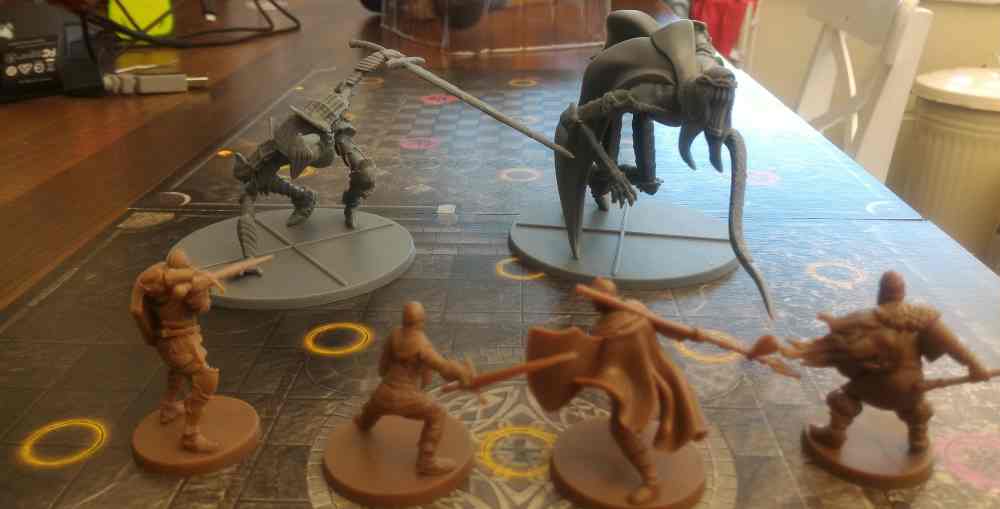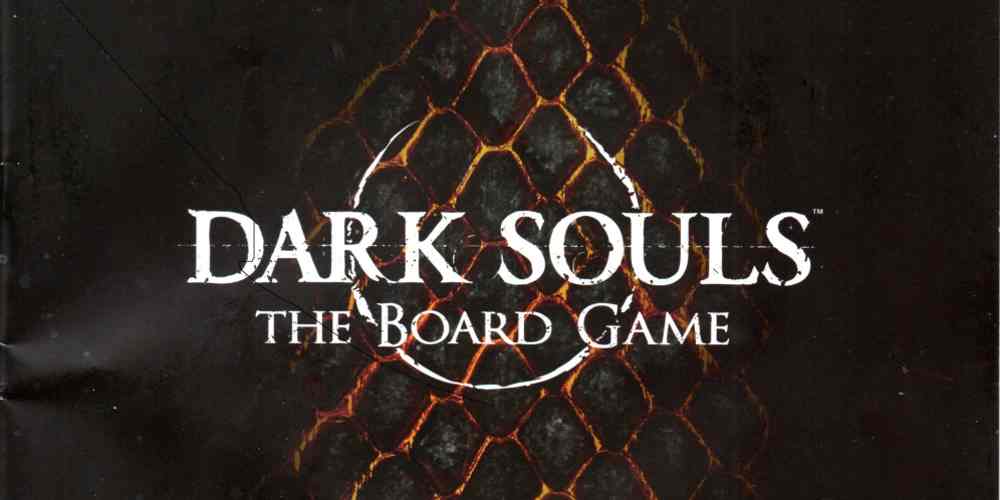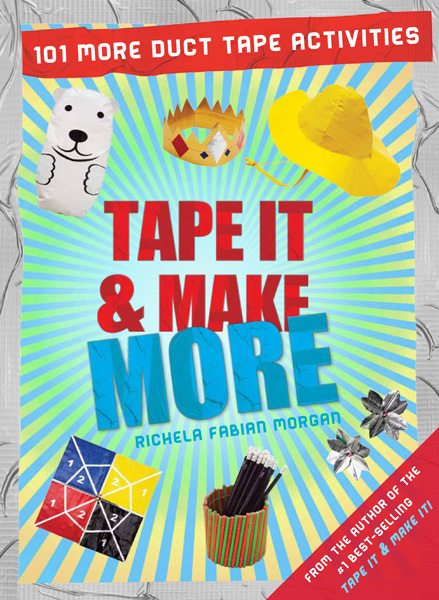Dark Souls: The Board Game was funded by one of the most successful tabletop Kickstarter campaigns to date. Based on the popular video game of the same name, it pulled in over $3.5 million dollars. The game is a cooperative dungeon crawl board game for 1-4 players.
With the Kickstarter now successfully delivered, GeekDad has been lucky enough to be sent a production copy from the game’s latest print run. With Dark Souls now available from retail outlets, we took a look in inside the box to see what the $3.5 million fuss was about.
It’s the minis!
As I’ve noted before, miniatures games pull in the funding on Kickstarter, and those in Dark Souls have a great aesthetic. In the video above, we take a look through the box contents, and in the next couple of weeks, we’ll be playing through the game in order to deliver a full review.

In the meantime, here’s a rundown of the many components found inside:
- 27 “highly detailed” plastic miniatures.
- 9 double-sided game board tiles.
- 4 Player boards.
- 64 health and stamina cubes.
- 15 dice.
- 121 tokens.
- 252 cards.
- 8 tracker dials.
- 1 rulebook.
As you’ll see in the video, the quality of the miniatures is variable. They’re resin models, which are subject to bending; more than the hard plastic models Games Workshop make. Citadel’s models are my (high) benchmark against which I measure all miniatures games. The Dark Souls minis are broken down into three types. Main Boss, Mini Boss, and Enemies. The quality of the Enemy figures, whilst in-no-way bad, is not of Citadel quality; the sculpts are less well defined. The character models (which are a different color) are better.
There’s not a huge amount of variation between the characters: Assassin, Herald, Knight, and Warrior are a rather samey baseline. I assume they’re taken directly from the video game, which I must confess I’ve never played. If you’re a Dark Souls aficionado, I guess you know what to expect but the martial nature of the characters does suggest a certain type of game-playing experience.
The Boss models are excellent. They’re made from stronger plastic (or at least seem to be) and are multipart kits that come pre-assembled. So there’s no, GW style, hours of fiddly assembly, with plastic glue on every surface. These Boss figures are the real-deal. In particular, the Dragon Slayer and the brilliantly named “Dancer of the Boreal Valley.” All of the Boss models look as though they would be great to paint.
The card components of the game are second to none. Sturdy board pieces and good card stock with excellent illustrations and a strong theme. Thematically the game is tremendous throughout. The minis and the dark artwork have an aesthetic that is stamped with is entirely its own.

The player boards are works of art and very appealing to those of us who can’t resist a character sheet or good artwork. There are lots of components to the game. The price tag for Dark Souls: The Boardgame is hefty, but you do get a lot of game for your money.
The game itself is a cooperative dungeon crawler. It is an iterative game. Character death means starting over and trying to navigate the dungeon again. I’m intrigued to see how that plays out. The adventurers start with a number of “sparks” depending on how many players there are. Defeat and resting at the “Bonfire” tile cause sparks to be extinguished. Once the number of sparks is reduced to zero, and the characters die, the game is over.
At the bonfire, you can acquire new stuff or improve your characters. Before you take on the final boss, you’ll have to visit the bonfire at least once. This will reset the dungeon, but the repopulation of its chambers will give characters the chance to harvest more souls. Souls are the currency of the game, so killing off those monsters is essential to improving your characters abilities.
The very concept of bosses and mini-bosses as villains are straight out of the world of video games, and I’ll be interested to see how, what is essentially a digital abstract, translates into a physical board game (I have seen this type of thing done well in Michael J. Ward’s Destiny Quest books. Note also, both games have customisable weapons.)
Dark Souls: The Board Game is an intriguing looking game and a very well crafted one. Of course, the proof of its quality will be in the playing. Agents of Sigmar are booked to play the game soon. Do look out for a full playthrough demo and review in the next couple of weeks.
Disclaimer: GeekDad were sent a copy of the game to review.



